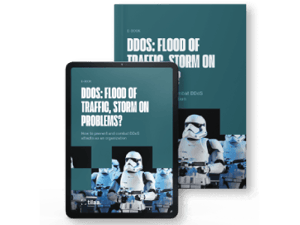
Best practices for outsourcing your database environment to the cloud
Using data well is the critical success factor in business today. But there’s a difference between getting the best payback from your database, and being expert in the million features and functions of a database environment. So instead of pricey in-house resources, more and more companies are deciding to outsource their database setups to people who do it for a living.
(It’s a core competency thing. The more you focus on what you do best, the better you’re able to compete.)
And you can’t say “outsource” today without saying “cloud”. Well, you can, but you know what we mean. Partnering with an expert in cloud database management brings a raft of benefits: lower capital costs, less need for in-house expertise, and no Big Iron in the basement. Sounds perfect, right?
But there’s more than one way to outsource management of your database environment – and more than one kind of database to do it with.
That’s why we’ve supersized our cloud database offer here at Tilaa – with options now including MySQL and PostgreSQL, hosted in all-European datacenters with all the boxes like redundancy, updates, and patches ticked. But while the decision to go cloud may be a no-brainer, there are still right and wrong ways to approach it.
So, we’ve put together this short guide to best practice when taking up database-as-a-service, or DBaaS. Use it when you’re asking those initial questions of your DBaaS provider.
Database management from a cloud provider: the beautiful idea …
Moving your database applications to the cloud means more than saved space in the server room. If you outsource management of that environment – things like configurations, capacity planning, resource allocation – you have a lot more time to do the database work that matters to you: storing data, using data, transforming data.
Ideally, that’s what DBaaS brings: all the behind-the-scenes stuff stays behind the scenes, professionally managed so you don’t have to worry about it. This is your first best practice: make sure your cloud database setup is a managed environment.
… and why some prefer keeping it in-house
But a traditional in-house database setup does have some advantages.
- It’s installed at your premises – no customer data stored overseas
- Your data isn’t sharing a server with someone else’s stuff
- Consistent bandwidth, since you’re not connecting over the web
- Your own staff, who know the details of your implementation
There are solutions to all of these. But first, let’s look at the database platforms we offer – because not all are the same. There’s your second-best practice: make sure your provider offers you a choice of platforms.
MySQL: familiar name, freakishly fast
MySQL has been around for a loooong time, starting as an open-source project and now owned by Oracle. This gives you the reassurance of a software giant’s development plans and upgrade schedule, plus the flexibility open-source database software has always offered with its MariaDB codebase.
As a purely relational database, however, MySQL is extremely fast, and its huge installed base means there’s a vast ecosystem of applications, extensions, and customisations available. MySQL today is an industrial-strength database suitable for almost any business application.
PostgreSQL: true open source, concurrency smarts
The other big name is PostgreSQL or “Postgres”. Beloved by the open-source community, it’s object-relational rather than purely relational. And compared to MySQL, Postgres is regarded as being more enterprise level, with build-in replication, redundant structures, and failover concepts.
Postgres does have a smaller installed base than MySQL, which means fewer third-party applications and customizations. But this is rarely a problem in the real world; “fewer” here still means tens of thousands of extensions available. Put simply, if your database applications use a lot of concurrent processes like inherited tables, Postgres will work better; for reading vast amounts of data, MySQL has the edge. In practice, though, many businesses won’t notice the difference.
Summing up: they’re both great databases, each with specific strengths. Which is why we offer them both. And that’s not the end of the story: we plan to offer more platforms in future. We’re not wedded to either database environment – we’re wedded to offering cloud database platforms that works for you.
So, what else do you need to know?
Data security: both legal and technological
On to our third best practice: remember security has two sides. You need to keep your data safe from bad actors probing for holes … and from governments threatening you with noncompliance fines.
That’s an area where Tilaa shines from the start. First, we’re Europe-based, so all your data will remain within EU borders (a basic GDPR req) by default: unlike some cloud providers, we’re not looking to go global. Second, our datacenters maintain a broad set of certifications: ISO 27001, ISO/IEC 9001, and ISAE 3402 type 1. We also carry NEN 7510 for our healthcare customers in the Netherlands.
SLAs with genuine support guarantees
Our fourth best practice answers another of those in-house database benefits: we treat your database environment as if it were our own. We’re real people, approaching our work in accordance with defined quality standards. And we enjoy operating at human scale: big enough for your data, small enough to know our customers personally.
Which solves the other problem of cloud outsourcing: knowing who to contact when you have a support issue with your cloud database configuration.
Getting the business model right
The biggest single advantage of outsourcing is cost – and cloud database management scores high. With a traditional in-house database, you’ll be adding servers and storage as your needs grow, and often find utilisation rates nosedive to 0% at night – you’re paying for it, but you’re not using it. Not so with cloud.
Tilaa offers a choice of subscriptions and payment plans right-sized for your business, with the advantage of “burst capacity” when you need it. Hence our fifth best practice: make sure you’re not paying for things you don’t need all the time. (On the subject, why not take a look at our article on avoiding bill shock?)
Look for active, ongoing improvement
Which brings us to our sixth and final best practice: look for a partner that engages in continuous improvement, rather than just keeping the wheels spinning. A cloud partner who provides clear performance reports, is able to discuss issues intelligently, and actively seeks to make your implementation better by automating repetitive processes and optimising database management.
These six best practices are how we operate at Tilaa. And it’s why companies around the world have trusted us with their outsourced applications and data since 2008.
Conclusion
So: a choice of platforms, secure and compliant by design, with an expert team you can trust. That’s why we recommend our two datacenters in the Netherlands as the ideal home for your managed databases in the cloud. It’s databases done right.
To talk more about Cloud Database, please contact us here:


